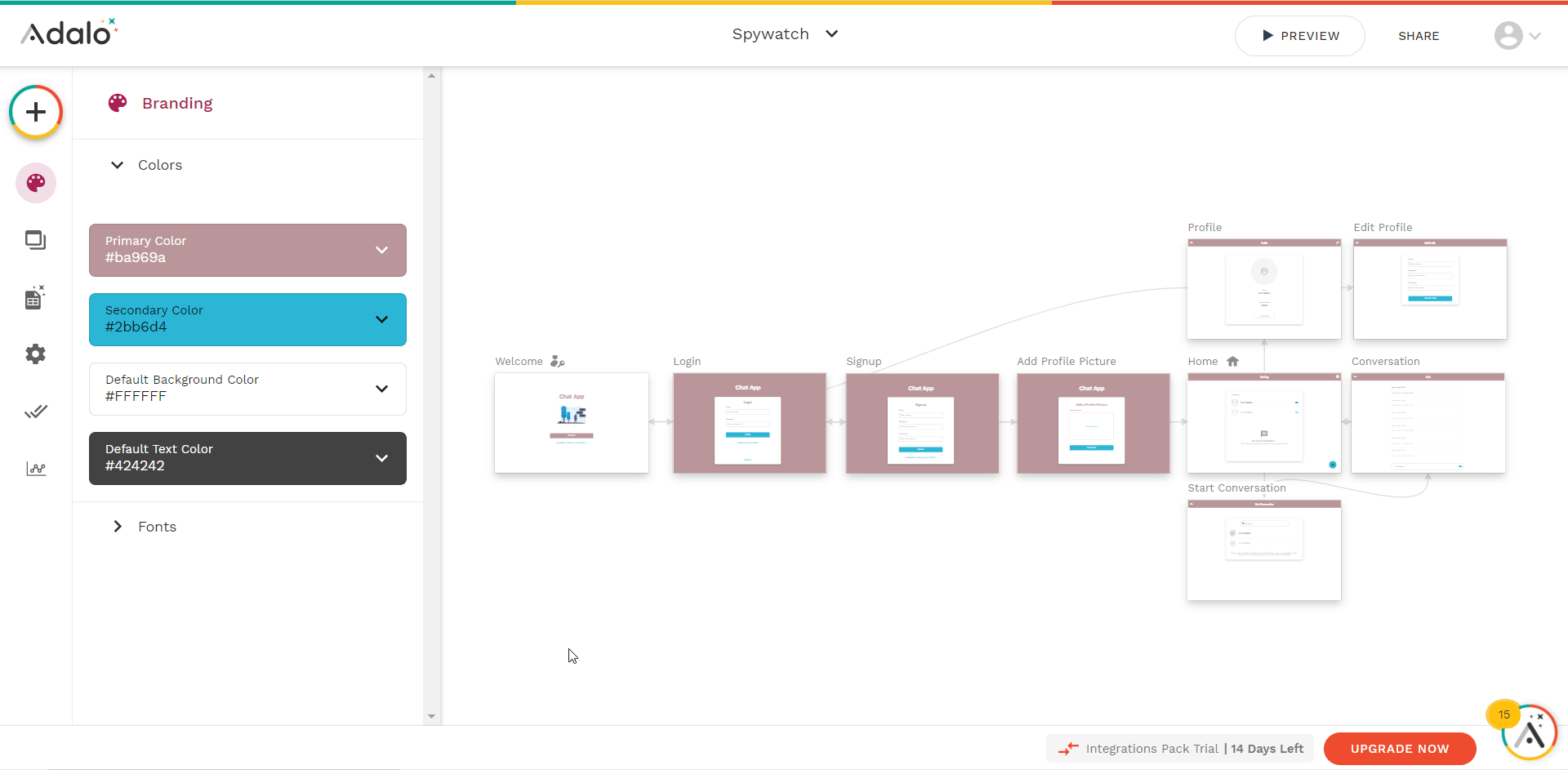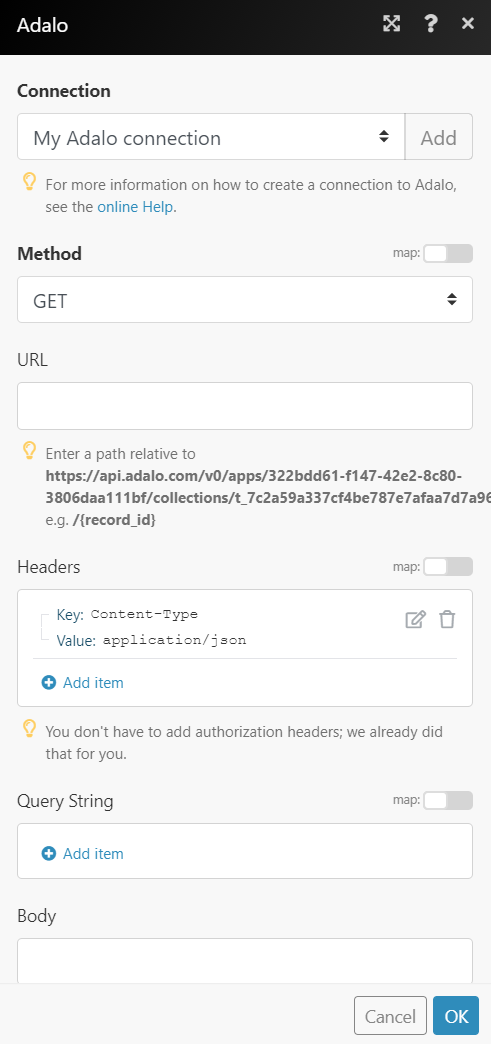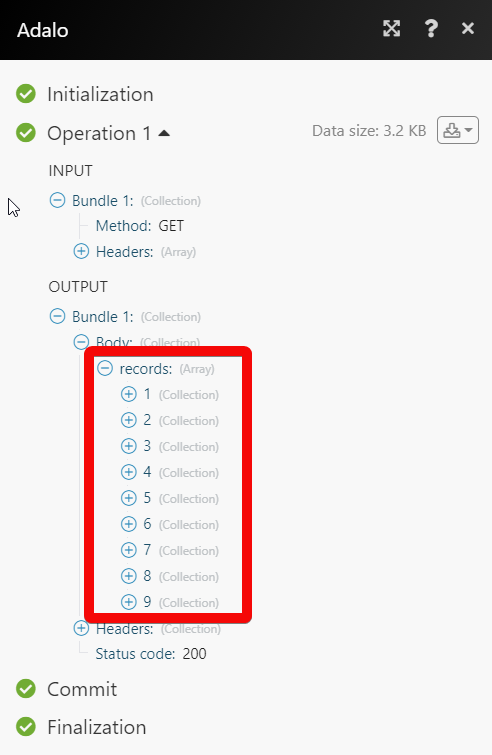Adalo
The Adalo modules allow you to monitor, create, update, send, retrieve, list, and delete the records in your Adalo account.
Getting Started with Adalo
Prerequisites
- An Adalo account
In order to use Adalo with Integromat, it is necessary to have an Adalo account. If you do not have one, you can create an Adalo account at app.adalo.com/signup.
Connecting Adalo to Integromat
To connect your Adalo account to Integromat you need to obtain the API Key, App ID, and Database Collection ID from your Adalo account and insert it in the Create a connection dialog in the Integromat module.
1. Log in to your Adalo account.
2. From the left menu, click Settings (![]() )> APP Access > Generate Key.
)> APP Access > Generate Key.

3. Copy the API Key to your clipboard.

4. Go to Integromat and open the Adalo module's Create a connection dialog.

5. In the API Key field, enter the API key details copied in step 3.
6. In the App ID field, enter your Adalo account's App ID. For example, if your Adalo account's URL address is https://api.adalo.com/v0/apps/{appId}/ then your App ID is {appId}.
7. In the Databases Collection ID field, enter the Collection ID details. You can find it at Database > Users > API Documentation. The endpoint will be in the https://api.adalo.com/v0/apps/{appId}/collections/{collectionId} format.
Record
Watch Records
Triggers when a record is created or updated.
| Connection | Establish a connection to your Adalo account. |
| Watch Records | Select or map the option by which you want to watch the records:
|
| Limit | Set the maximum number of records Integromat should return during one execution cycle. |
List Records
Retrieves a list of records.
| Connection | Establish a connection to your Adalo account. |
| Limit | Set the maximum number of records Integromat should return during one execution cycle. |
Get a Record
Gets a specified record.
| Connection | Establish a connection to your Adalo account. |
| Record ID | Select or map the Record ID whose detail you want to retrieve. |
Add a Record
Adds a new record.
| Connection | Establish a connection to your Adalo account. |
| Enter (map) the user's email address | |
| Password | Enter (map) the user's password. |
| Username | Enter (map) the user's username as it appears in the record. |
| Full Name | Enter (map) the user's full name. |
| Profile Picture | Enter (map) the URL address to the user's profile image. |
Update a Record
Updates an existing record.
| Connection | Establish a connection to your Adalo account. |
| Record ID | Select or map the Record ID whose details you want to update. |
| Enter (map) the user's email address | |
| Password | Enter (map) the user's password. |
| Username | Enter (map) the user's username as it appears in the record. |
| Full Name | Enter (map) the user's full name. |
| Profile Picture | Enter (map) the URL address to the user's profile image. |
Delete a Record
Deletes a record.
| Connection | Establish a connection to your Adalo account. |
| Record ID | Select or map the Record ID you want to delete. |
Other
Make an API Call
Performs an arbitrary authorized API call.
| Connection | Establish a connection to your Adalo account. |
| URL |
Enter a path relative to For the list of available endpoints, refer to the Adalo API Documentation.
|
| Method |
Select the HTTP method you want to use: GET POST PUT PATCH DELETE |
| Headers | Enter the desired request headers. You don't have to add authorization headers; we already did that for you. |
| Query String | Enter the request query string. |
| Body | Enter the body content for your API call. |
Example of Use - Get All Collection Records
The following API call returns all the records from your Adalo account:
Method:GET

Matches of the search can be found in the module's Output under Bundle > Body > records.
In our example, 9 records were returned:










